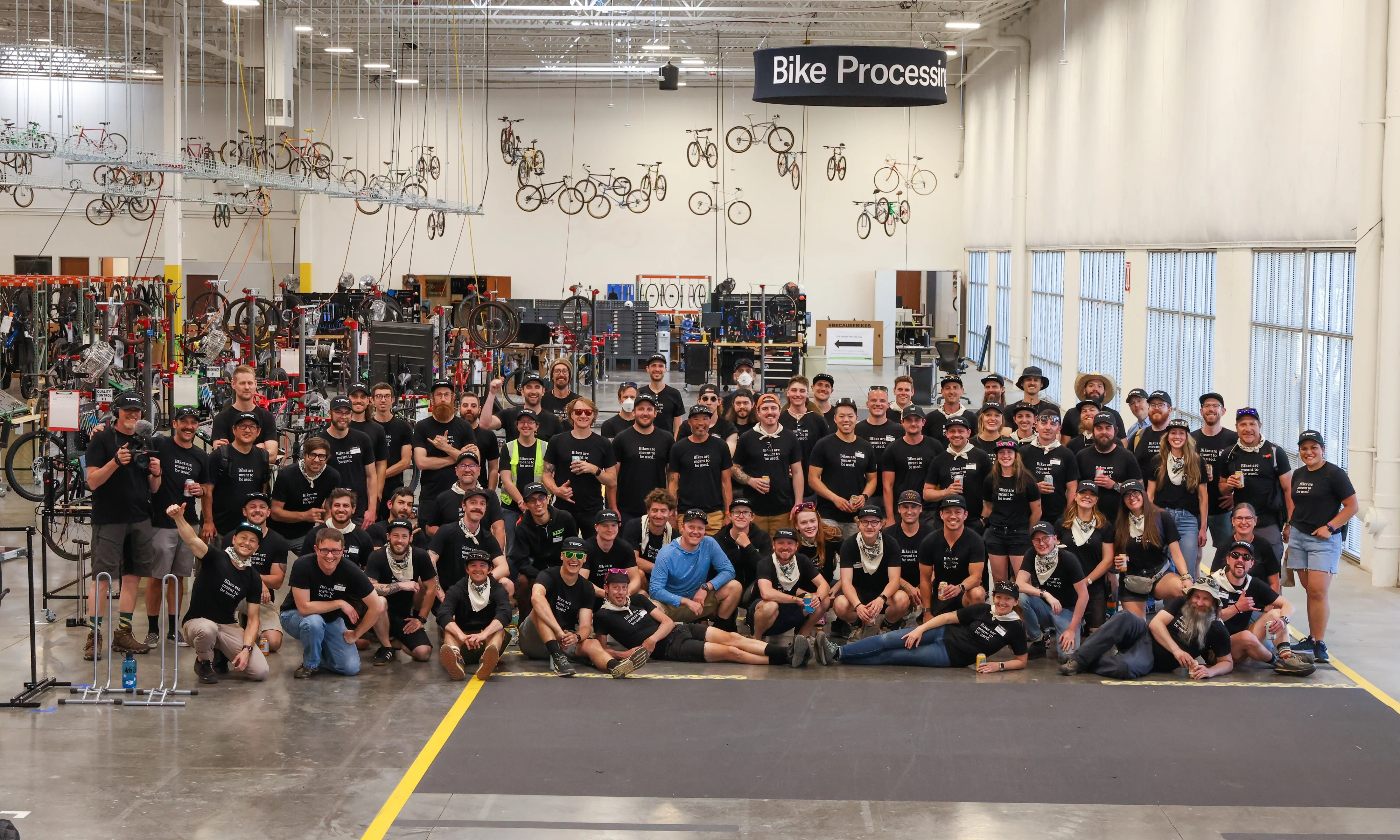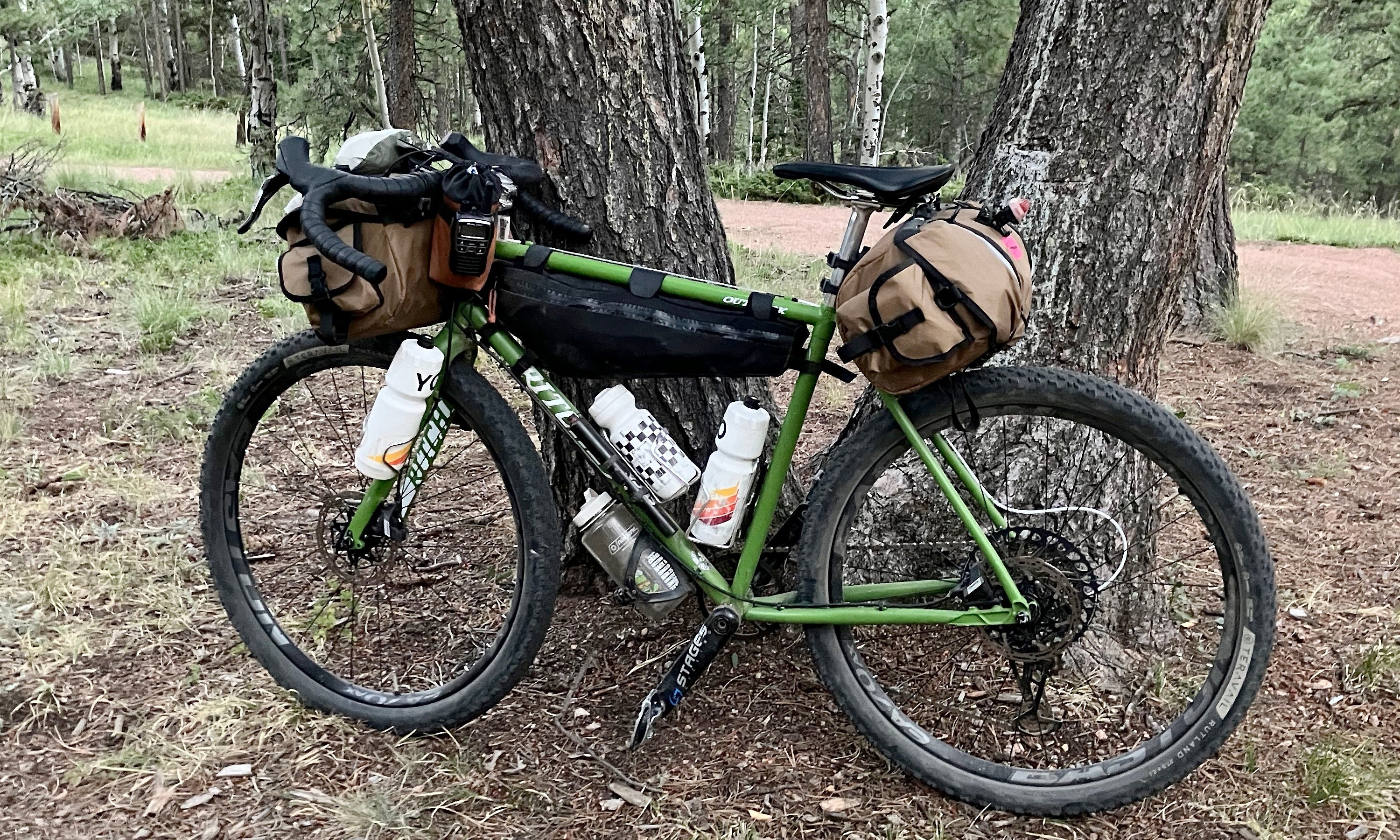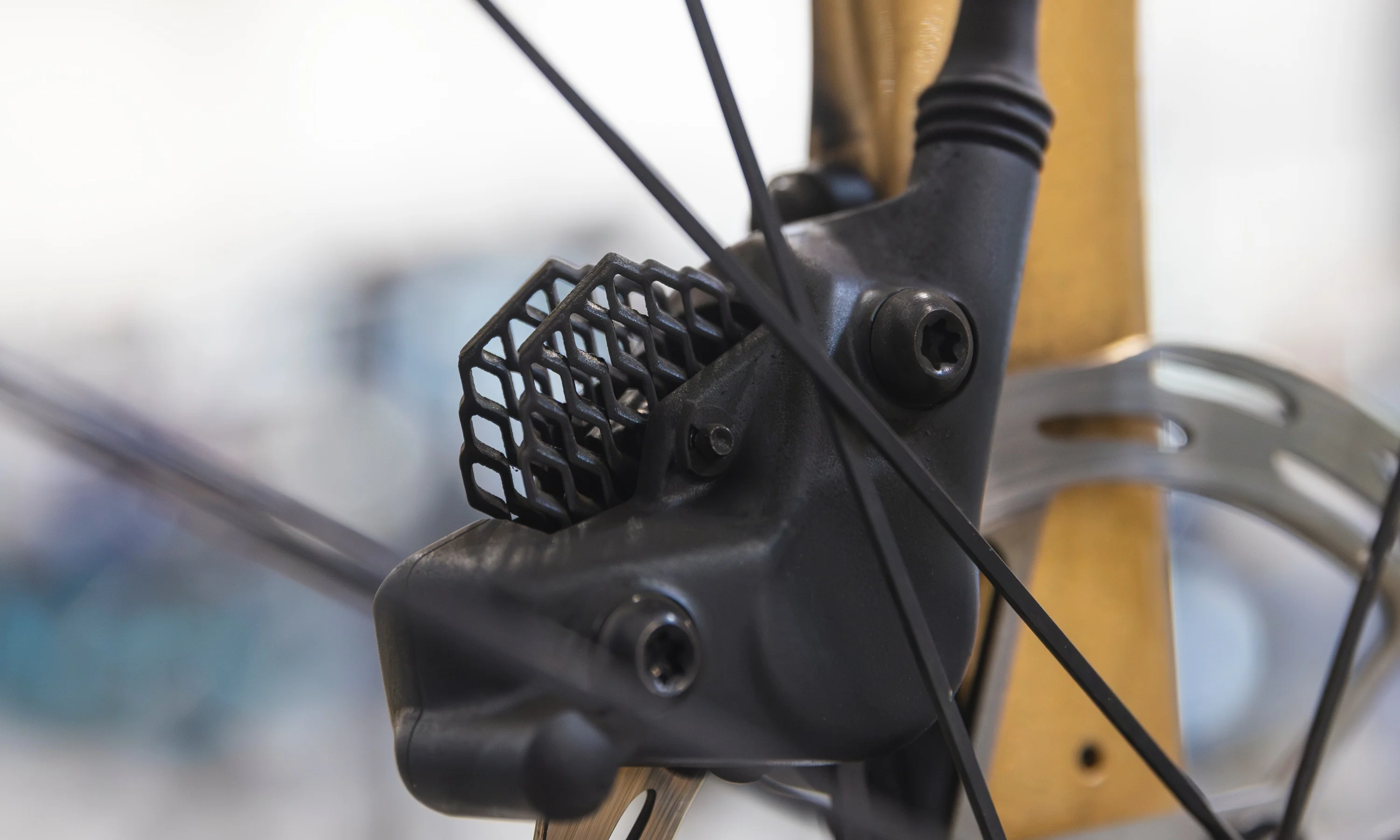In a world full of high-end carbon components, ENVE Composites has propelled itself above the rest, flying somewhere between the stratosphere and outer space. ENVE is aptly named because of the feelings of jealousy and desire its components can inspire in riders (myself, first and foremost). For many, ENVE is the pinnacle of carbon bling.
Based in Ogden, Utah, ENVE is one of the few companies manufacturing carbon wheels in the U.S., and it's built a devoted following with wheels that are renowned for their exceptional engineering and quality.
Since it's become one of the most desirable brands we sell at TPC, I decided it was time to find out more about this renowned American company. I talked to Jake Pantone, VP of Product and Consumer Experience at ENVE, to learn more about one of the world’s leading carbon component manufacturers.
[button]SHOP ENVE[/button]
1. ENVE wheels and rims are American-made
Carbon rims are the core of ENVE's business, and they're the product that has built its reputation. ENVE produces wind-cheating aero road rims and has led the charge in validating carbon as a high-performance rim material for mountain biking. Every ENVE rim is still made in America.
 "There are certain products that just make more sense to make overseas. But since day one, we've made 100% of our rims here in the U.S., and that’s definitely what the bulk of our manufacturing resources are directed towards.
"There are certain products that just make more sense to make overseas. But since day one, we've made 100% of our rims here in the U.S., and that’s definitely what the bulk of our manufacturing resources are directed towards.
"The other products that we make in house is our carbon hub shell for our carbon road hubs. We also make our carbon mountain and road bike stems here. And some custom small parts we make for custom framebuilders like Vanilla Workshop. They have a custom seatmast topper we make here.
"We do prototyping for future product here. For the most part components like handlebars, forks, and seatposts are made in Asia. Wheels, hubs, and stems are made in the U.S."
[newsletter]
2. Staying American-made is worth the risk
The financial pressures of a competitive market force many U.S. brands to rely on overseas carbon rim manufacturing. But ENVE is committed to keeping rim production in the U.S. and it's a core part of ENVE’s identity.
"Around 2009, we were asking ourselves if we could even survive as a brand making product here in the U.S. We had a lot of outside pressure from people in the bike industry, people consulting for us, and people offering free advice. All of them were saying there was no way to manufacture carbon rims in the U.S. and be competitive. But none of it felt right to us.
"We founded the brand based on this concept of doing things differently and accepting new challenges, not only in manufacturing but in achieving higher goals with the product itself. We felt like we would lose control over the techniques and engineering processes we follow to make the rims special. I think the thing most people don’t understand about composites and ENVE, in general, is how much hand labor goes into making a carbon fiber part."
[button]SHOP ENVE[/button]
"We’re still not a 'big' brand per se, but compared to 2009 we’re much larger now. Back then so much of our customer base was in the U.S. We had built a foundation of being made in the USA, and to turn tail and go overseas would just make us like any other carbon wheel brand. So we drew a hard line in the sand and said, 'this is who we are and this is what we want. We want to have a close relationship with the product. If we can’t make it work here, then let’s die trying.'
"We wouldn’t be where are today without the owners, who just have insane appetites for taking on risk, and who had a firm belief that the thing we were building had longevity and potential. There’s a whole lot of tenacity, stubbornness, and hard work that got us through the hard times."
3. Being American-made allows ENVE to develop prototypes in a matter of weeks, not months
Keeping rim manufacturing in the U.S. and under one roof gives ENVE an advantage when it comes to product development cycles. It improves the prototyping process and leads to the high-quality products we see today. 
"Design, development, and testing are at the core of what makes ENVE special. It’s also why being made in the USA is so important to us. It’s about performance. We have the engineers and the design team all under the same roof as where the product is being manufactured, assembled, shipped, and supported. We have a tight communication loop so if we get some feedback, say from a test rider, we can process that feedback so quickly. It allows us to be extremely dynamic.
"We can have a concept wheel, for example, and we can say let’s make it X-depth and Y-width, and we want it to behave like this. The engineer can go and design that on his computer, send that file down to the machine shop, and the machine shop will cut the tooling and the molds for that wheel. In a couple of weeks, sometimes as fast as a few days, we can be riding a completely new concept. That process happens a lot faster here than it ever would overseas. A two-week process for us here at ENVE becomes a one- to two-month process when it’s outsourced.
"Why does that matter? If you look at our recent M-Series or any of our recent road wheels, those wheels have gone through up to 20 laminate revisions. It’s a level of detail and perfection which you just don’t get if you’re sourcing product from overseas. The timeframes just run too long and become two- to three-year product development cycles. Being able to rapid prototype stuff here helps accelerate development."
4. ENVE's model gave it an edge when wheel size trends changed
Keeping production in the U.S. makes forecasting easier, reducing overproduction. This strengthens the brand but it has also helped ENVE stay agile and keep up with fast-moving industry trends.
"We have a sort of hybrid or just-in-time manufacturing model. We don’t build a rim until there’s an order that says to build a rim. That said, we do know what our most popular wheels and rim models will be so we try to have some on-shelf inventory of that. But a good example is back in 2014, 26” wheels kind of went away overnight. 27.5” came along and we were hearing rumors about a big industry shift coming.
"We were working pretty closely with Santa Cruz at the time and they were about to launch a whole line of 27.5” bikes. They asked us to make a wheel. Very quickly and very dynamically we were able to create a line of 27.5” mountain bike wheels. At the same time, 26” production was basically turned off within a week. We had almost zero 26" inventory on the shelves and we were able to focus fully on developing the new 27.5” and 29” wheels that were in demand."
5. ENVE's rim innovations influence tire-pressure choices
ENVE is constantly pushing wheel technology and improving products. The next generation of carbon wheels allows riders to run lower tire pressures. Education, awareness, and more accurate pressure measurement will be key to improving the experience of cycling. 
"I’m really excited about the entire wheel system. We’ve seen this progression where we’ve solved tubeless sealing and burping problems and also made a really strong rim that can take hits. But then we still had the issue of pinch flatting tires against the rim. So we came out with this M-Series rim that has new rim strip technology and the G23 gravel rim with the wider hookless bead to prevent pinch flats.
"So now that we have a wheel that allows you to run the tire you want without flatting, a lot of my focus has been moving toward playing with tire pressures, specifically pushing people on our wheels to run lower pressures. So much of the ride quality and the experience on the bike is dictated by the pressure someone runs, we’re putting a lot of focus and emphasis on tire set-up.
"There’s a product we’re working on that’s been at some events, so it’s not really a secret, but it’s appropriately being called the 'ENVE inflation station.' It’s a tire inflator that guarantees accurate pressure up to a tenth of a PSI. We’re introducing hookless rims across all road, gravel, and mountain platforms so we want riders to really be aware of how important tire pressures are and understand how it affects their ride.
"Pressure needs to go down as tire volumes go up. On a rougher surface, you’re going to be faster if you lower your pressure. Some riders are experimenting with going into the low 20s. Tenths of a PSI matter that low. Inflation-related technologies are going to slowly change the sport for a lot of people in terms of their experience on the bike."
6. ENVE is run by passionate riders
ENVE is a company that’s built by riders for riders. The company culture encourages employees to go ride and put ENVE’s products to the test. 
"We have a lunch ride that leaves here almost every day between 11:30 and 12:30. We have former pros, novice riders, roadies, and mountain bikers. Our lunch rides range from easy beginner-level rides to maybe the hardest thing you’ll ever try to do.
"We moved into our new headquarters about three years ago. Our new building was built with locker rooms and all the amenities you need as an outdoor athlete. We’re positioned near good ride areas and we have ride-centric company events and sponsored events. Those things have helped us grow and enhance the culture of riding here.
"We’re a company founded by riders. We want to get everyone in the building out on a bike, experiencing new things regularly. It’s easy to get caught up in the drama, and emails, and the day-to-day of the office, but riding pays dividends in terms of happiness and morale. It also gets us great product insight and feedback. The more riders we get out there, the more ideas are fostered from it."

7. ENVE's future could extend beyond carbon fiber
"Gravel and mountain biking are still evolving rapidly. We’re still learning a lot with our rim and component development. Riding drop-bar bikes off-road definitely still has a way to go.
"We always aim to do things better and carbon fiber is our material of choice. But from steel to aluminum, to titanium, to carbon, all materials reach their maturity, and then you have to start thinking what the next super material might be. We’re looking at products and materials that might be the next thing after carbon. There’s cool stuff happening and it’s hard to keep up with how fast innovation and technology progress, but it’s also exciting."
[button]SHOP ENVE[/button]
Photos by Ian Matteson, ENVE Composites













